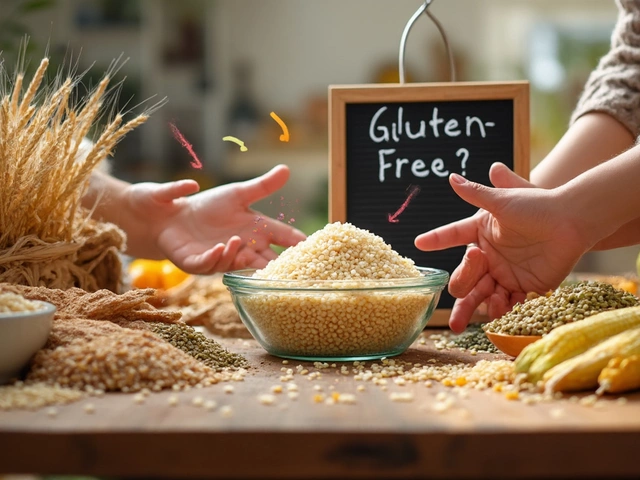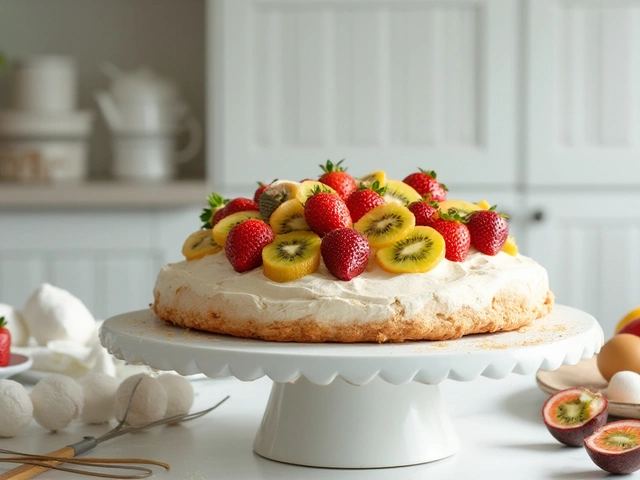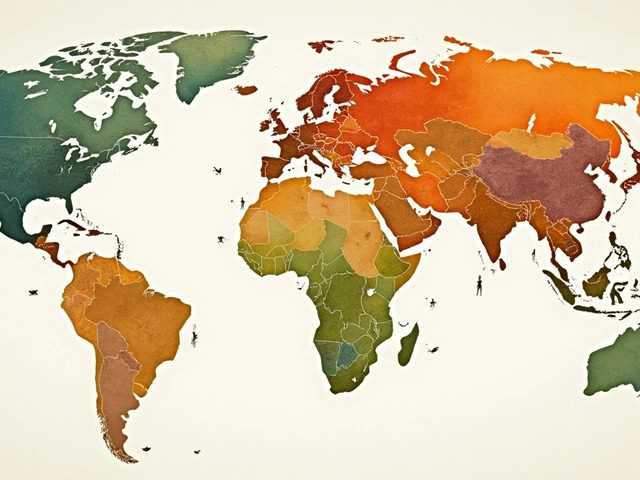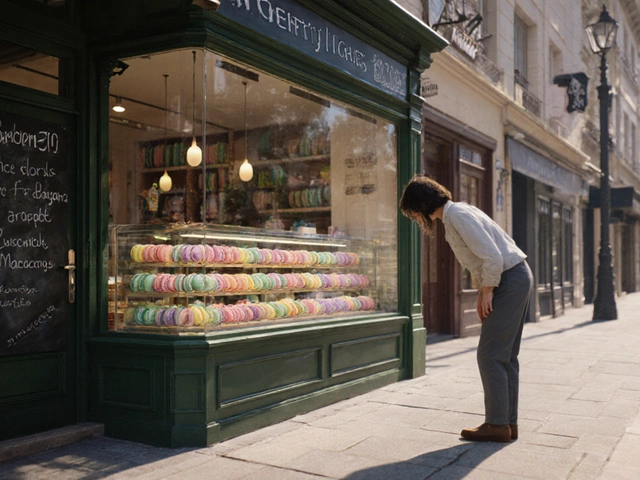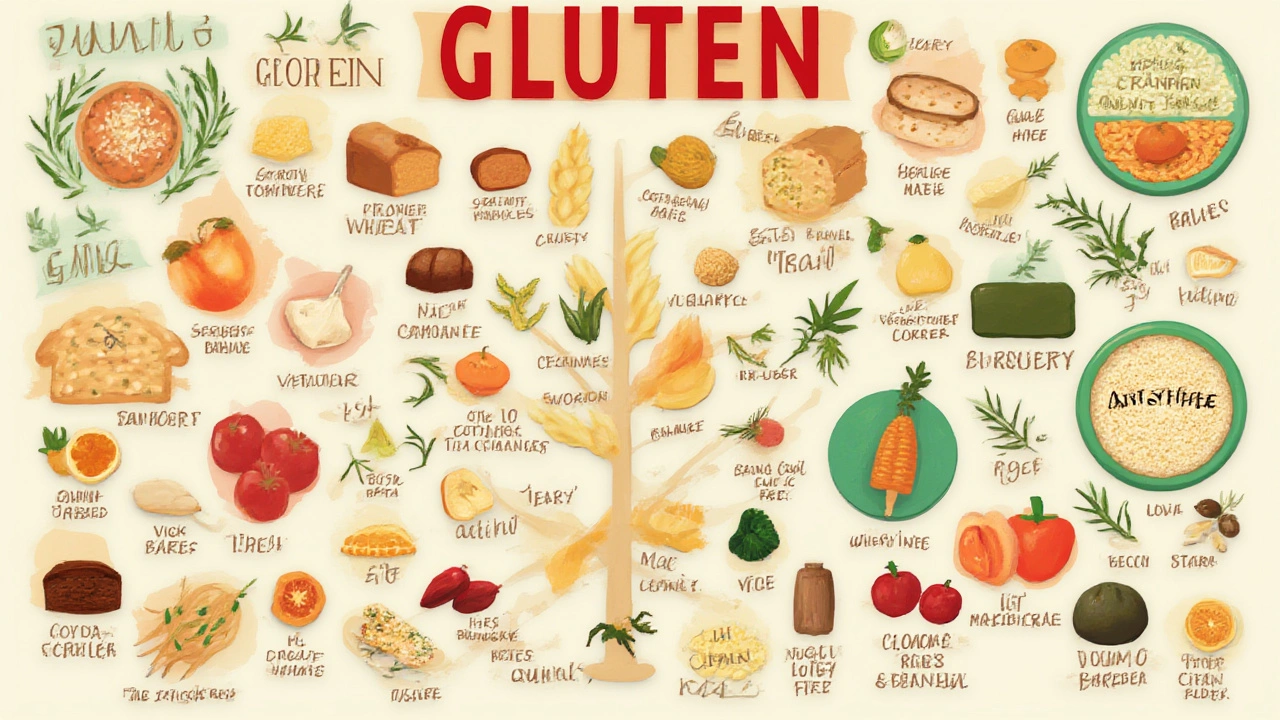
Fancy a slice of freshly-baked bread? For most of us, it’s the ultimate comfort food. But for anyone trying to steer clear of gluten, that innocent looking loaf is public enemy #1. The truth is, gluten pops up in everyday foods far more than you’d think—and some sources might surprise you. So, what food is really high in gluten? Here’s everything you need to know, armed with facts, not myths, plus tips for actually living with (or dodging) gluten.
Where Gluten Hides: The Real High-Gluten Offenders
Gluten is a sticky protein. You’ll mostly spot it in wheat, barley, and rye. But not all wheat is created equal—just stroll into any bakery in Brighton, and you’ll see everything from fluffy white bloomer loaves to dense sourdough, all with different gluten contents. If you’re picturing gluten as some mystical ingredient, think of it like the scaffolding in bread dough. It traps air bubbles, gives baked goods their bounce, and is all about that chew.
Let’s dig into the usual suspects with the highest gluten content:
- Bread (especially white and whole wheat): Standard loaves made from bread flour carry the most gluten—sometimes up to 14% of the flour’s weight. That’s the backbone of its soft, chewy texture. Supermarket sandwich bread, baguettes, bagels? Gluten bombs, all of them. Even that seeded farmhouse loaf.
- Pasta (regular pasta, not rice or legume-based): You’re looking at wheat flour again, typically durum wheat. This packs plenty of gluten—raw pasta flour can contain 12–14% gluten.
- Seitan: Here’s the kicker—seitan is literally pure wheat gluten, rinsed and kneaded until almost all starch is washed away. One hundred percent gluten, so it’s out for anyone avoiding the stuff. Vegans love it because of its meaty texture.
- Vital Wheat Gluten flour: Bakers use this powdered gluten to give extra lift to bread. If you see this in the ingredients, expect even more gluten than usual.
But not all gluten is equal. Hard wheat, which is often milled for bread flour, has more gluten than soft wheat, usually used in cakes and pastries. That’s why bread stretches, and cake crumbles. Ever seen Italian "00" flour for pizza? It comes from soft wheat—lower gluten than bread flour but still above what you’d find in sponge cake.
Barley and rye also contain gluten, but in smaller quantities than wheat. Rye bread is chewy, but it’s not as springy because its gluten doesn’t form the same stretchy network. Barley mostly sneaks in through malted drinks, like some beers, and malt vinegar.
If you’re the data type, here’s a quick comparison table:
| Food | Average Gluten Content (g per 100g) |
|---|---|
| Bread (white, whole wheat) | 10–14g |
| Regular Pasta | 10–12g |
| Seitan | 70–75g |
| Vital Wheat Gluten Flour | 70–80g |
| Rye Bread | 5–8g |
| Barley (pearled) | 5–7g |
How much gluten is too much? For anyone with coeliac disease, it takes less than 20 parts per million to feel the effects—a crumb, basically. But for most people, a typical British sandwich contains about 5 grams of gluten, right there between the two slices.
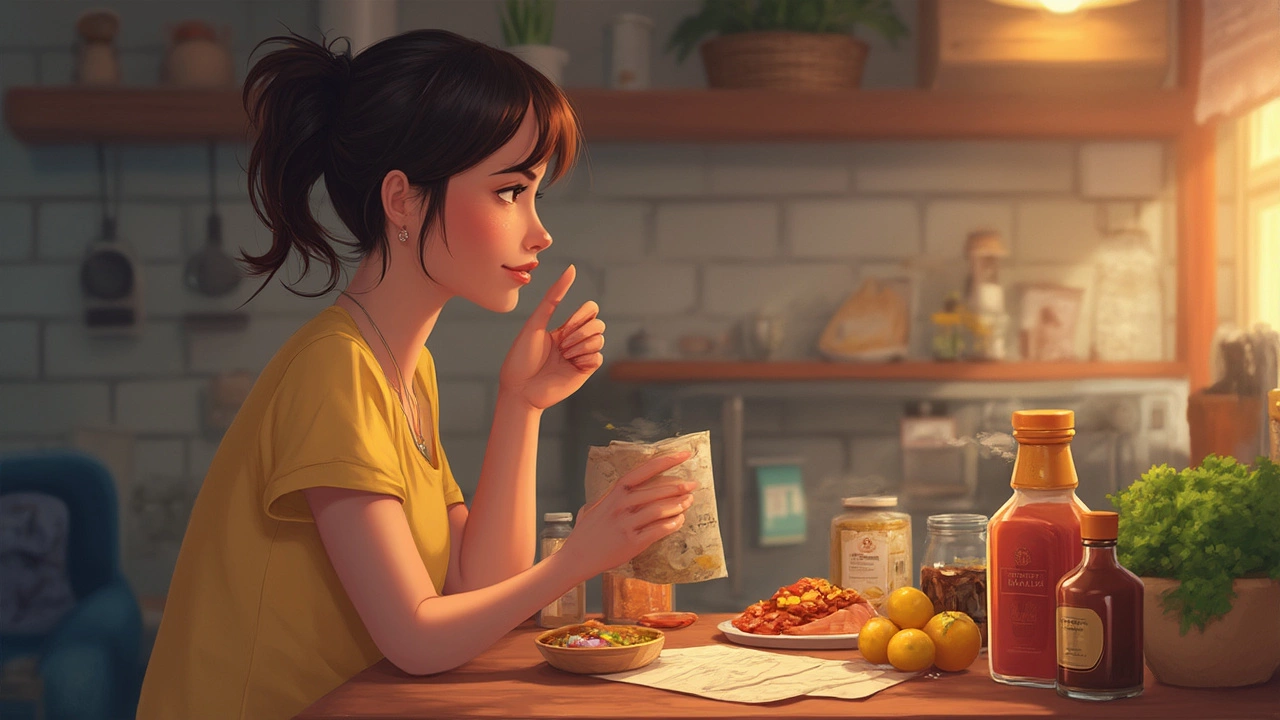
Unexpected Foods Where Gluten Lurks
Bread, pasta, cakes—obvious. But gluten has a sneaky side hustle as a texture enhancer, thickener, or stabilizer in processed foods. Sometimes it’s there, even when you’d swear it shouldn’t be. Here’s where you might accidentally stumble into gluten territory:
- Sauces and gravies: Many brands use wheat flour as a thickener. Even something as simple as soy sauce is a culprit—most traditional soy sauces use wheat as a base. Tamari's your friend if you want a gluten-free swap.
- Processed meats: Sausages, meatballs, even some veggie burgers use breadcrumbs or wheat-based fillers. Check those labels if you’re grabbing easy picnic food at the beach.
- Soup mixes and stock cubes: That smooth consistency sometimes comes from hidden wheat flour or wheat-based thickeners. Not all bouillon is safe.
- Ready meals: Especially pies and pasta bakes—wheat flour lurks in the sauce and pasta.
- Breakfast cereals: Especially those crispy wheat flakes, wheat biscuits, and even some granolas.
- Snack foods: Crackers, pretzels, and even some crisps. Some brands dust chips with flour and barely mention it on the label.
- Beer and malted drinks: Beer (unless gluten-free) is made from malted barley or wheat and is full of gluten. Some spirits, like whisky, might be made from gluten grains, but British distillation rules mean spirits are usually gluten-free—the distillation process gets rid of proteins entirely. Beer, though, is a no-go.
- Chewing gum and chocolate bars: Here’s a shocker—some brands use wheat for "improved texture." Look out for barley malt or wheat starch in tiny print.
The UK’s labeling rules demand wheat and gluten are highlighted on ingredient lists. Still, mistakes happen, and imported foods may use different rules, so it pays to keep your eyes peeled. If you spot anything like "modified food starch," "hydrolyzed wheat protein," or "malt extract," that’s often code for gluten. Even oats can be contaminated by gluten unless specifically labeled “gluten free” due to crop rotation or processing in shared facilities.
Here’s a tip if you’re dining out and can’t check labels: ask about any flour-based thickeners in gravies, or see if they can use cornflour (which is gluten-free). Chefs are usually clued-up these days, especially in Brighton—there’s almost always a decent gluten-free option.
If you’re craving crispy food, avoid anything battered or breaded unless it’s guaranteed gluten-free. Some takeaways now use chickpea flour (gram flour) for batters—a bit of a lifesaver for those missing fish and chips.
Be mindful with sweets, too. Some liquorice sweets use wheat flour, and even jelly beans might hide gluten-based thickeners. Always double-check chocolate—the ones with crispy crackles inside are almost always wheat-based.
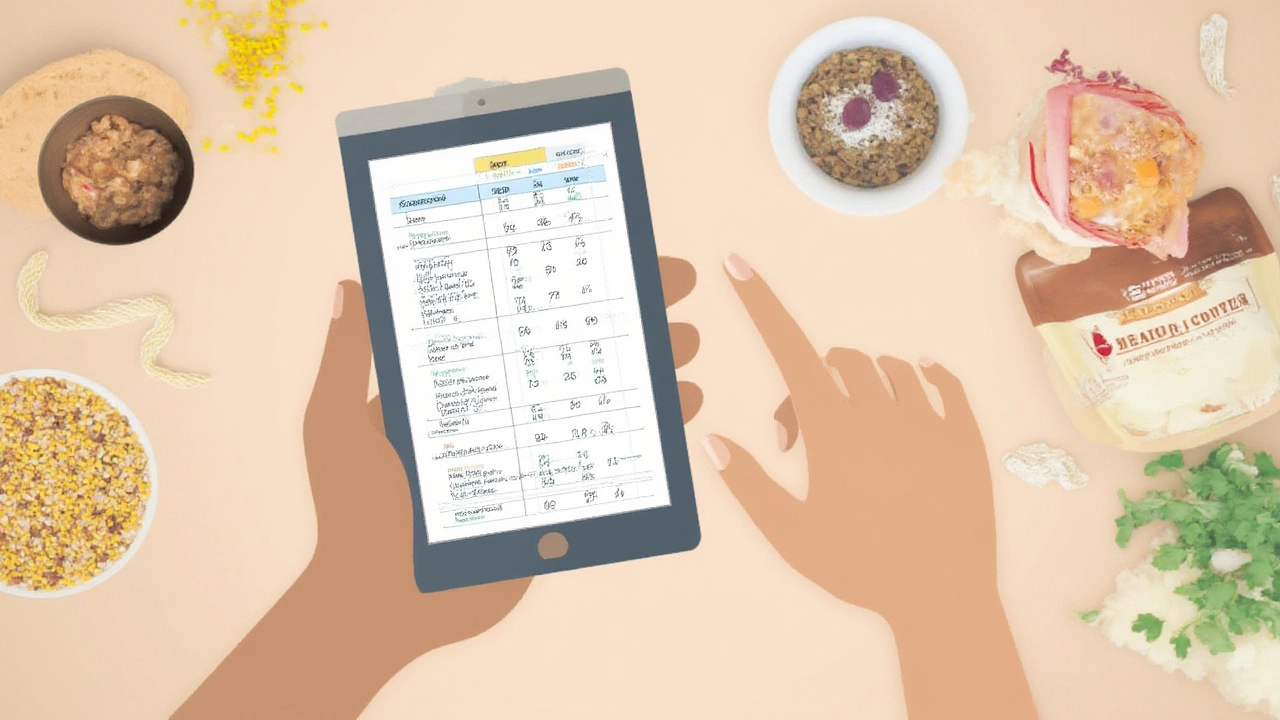
Tips and Tricks: Navigating a High-Gluten World
Figuring out how to dodge high gluten foods can feel like a minefield at first, but you really do get used to it. Don’t fall for the myth that gluten is lurking in every food; plenty of naturally gluten-free choices exist if you know where to look. Here’s how to take the stress out of eating, at home or out and about:
- Grains you can trust: Rice, maize (corn), quinoa, pure buckwheat (not wheat!), amaranth, and even polenta are naturally gluten-free. They’re not just safe—they’re often tastier than plain pasta.
- Firm “no-go” list: Bread, pancakes, regular pizza crust, cakes, and cookies unless specifically marked gluten-free. For home bakers, gluten-free recipes often call for a blend of flours like rice, potato, or almond plus xanthan gum to mimic gluten’s properties.
- Restaurants and takeaways: Plenty in Brighton sport gluten-free icons on the menu. Even pizzerias offer decent gluten-free bases. Just confirm that they aren’t prepped with shared equipment if cross-contact is a worry for you.
- Quick label check: In the UK, allergens like wheat must be bolded or highlighted under law, but barley, rye, and oats require extra care. “Gluten free” here means 20 parts per million or less, so look for both “gluten free” and anything saying “contains wheat.”
- Try ancient grains: Teff, sorghum, millet, and wild rice pack nutrition and are gluten-free by default. They’re easy to find in health stores around Brighton, and most supermarkets stock at least quinoa and buckwheat.
- Baking at home: Use gluten-free flour blends. Adding ground gums like xanthan or guar helps that classic bounciness. Remember, even a dusting of regular flour on a baking tray is enough to cause problems for the highly sensitive, so clean surfaces well.
- Hidden gluten in beauty products? Surprise: some shampoos, lipsticks, and even vitamins contain wheat derivatives. Not a food source, true, but worth knowing for those with severe reactions. It’s less common now, with tighter regulations, but always check if you’re extremely sensitive.
- Beers and ciders: Cider usually skips the gluten, but beer almost always contains it unless labeled “gluten free.” Some brands use special brewing processes to remove gluten—look for “gluten-removed” certification if in doubt.
Stats from Coeliac UK show there are over 700,000 people living with coeliac disease, and many more dealing with gluten sensitivity. Demand for gluten-free foods in Britain alone jumped by 27% between 2021 and 2024, which means better products and more choice on the high street. The trick is learning where the gluten hides and not panicking about what you have to give up. There’s real freedom in understanding your options—and genuinely fantastic gluten-free food, if you know where to look.
While gluten has a starring role in so many favourite foods, being aware of where it hides (and the sneaky ways it gets into unlikely places) gives you the edge. Whether you’re avoiding it by necessity or curiosity, knowing the real high-gluten foods makes eating easier at home or while travelling, and lets you savour those safe choices without worry.


